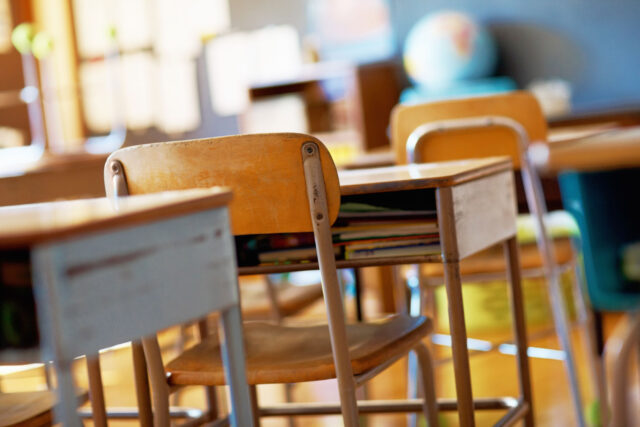Newly released 2022–23 data shows that California’s public school enrollment has fallen for the sixth straight year. The decline was slight—roughly 40,000 students (0.7%) out of nearly 5.9 million statewide. Unlike declines in the previous two years, actual enrollment this year was in line with predictions. But when we look more closely, we see that while predictions for grades 2 to 12 were largely on target, actual enrollment in the earliest grades fell short. This raises a number of concerns.
Altogether, California public schools have lost more than 310,000 students (5%) since fall 2019, shortly before the pandemic began. Last year’s slight decline comes on the heels of 2.6% and 1.8% drops in the first two COVID-era school years. The demographic research unit at the California Department of Finance projected a 0.5% decline for 2022–23, only slightly smaller than the actual 0.7% decline. In other words, this year’s decline reflects ongoing demographic trends. Extrapolating from these trends, the Department of Finance projects that enrollment will decline another 8% (by nearly half a million students) by 2031–32.
However, when we examine actual vs. projected changes across grade levels, a more nuanced picture emerges. In grades 2 to 12, enrollment projections for this year were quite close to actual enrollment. Grade 12 enrollment fell a little more than expected (6,931 vs. 1,426 students), while enrollment in grades 2 to 11 either increased more (grades 7 and 11) or declined less (grades 2–6, 8–9) than expected.
Kindergarten and first grade reveal a different story. Grade 1 enrollment was expected to increase by nearly 11,000 students more than it actually did. And transitional kindergarten (TK)/kindergarten enrollment fell far short of a projected increase: it was expected to grow by 60,877, partly due to TK expansion, but the actual increase was 25,883 students.
While these projections are sobering, the fact that declines in the earliest grades continue to outstrip projections adds concern that pandemic-related shifts may persist. Migration out of California to other states has accelerated, in part due to shifting work patterns and affordability concerns. Private school enrollment increased during the pandemic, although it is below last year’s levels so far in 2022–23. (Private school data are collected through June, so we only have a partial picture at this point.)
Because public enrollment declines are not fully accounted for by gains in private school enrollment and Census population estimates, some research has suggested that there are “missing” kids. This is an ongoing policy concern, and better data are needed to understand whether—and where—increased truancy is contributing to declines.
More generally, these declines presage fiscal challenges. As districts lose students—and as one-time federal stimulus funding comes to an end and state revenues decline—difficult downsizing decisions will become necessary.
Declining attendance and high levels of chronic absenteeism will further complicate district finances, as district funding is based not just on the number of students served but the number of days those students attend school. And even if attendance recovers, enrollment will decline over the next decade, barring dramatic population swings. Policymakers at the local and state level will need to adjust carefully over the coming decade to ensure that school downsizing decisions don’t affect student success—and that they don’t prioritize some neighborhoods or student groups over others.
Topics
absenteeism coronavirus COVID-19 enrollment enrollment declines in California's public schools K–12 Education Population transitional kindergartenLearn More

California’s Multilingual Population Is Driving TK–12 Enrollment Declines

A Closer Look at Enrollment Changes in California’s Public Schools

Factors and Future Projections for K–12 Declining Enrollment

Kindergarten Enrollment Declines Mask Differences by Age

Private Schooling Played a Small Role in Declining Public School Enrollment




